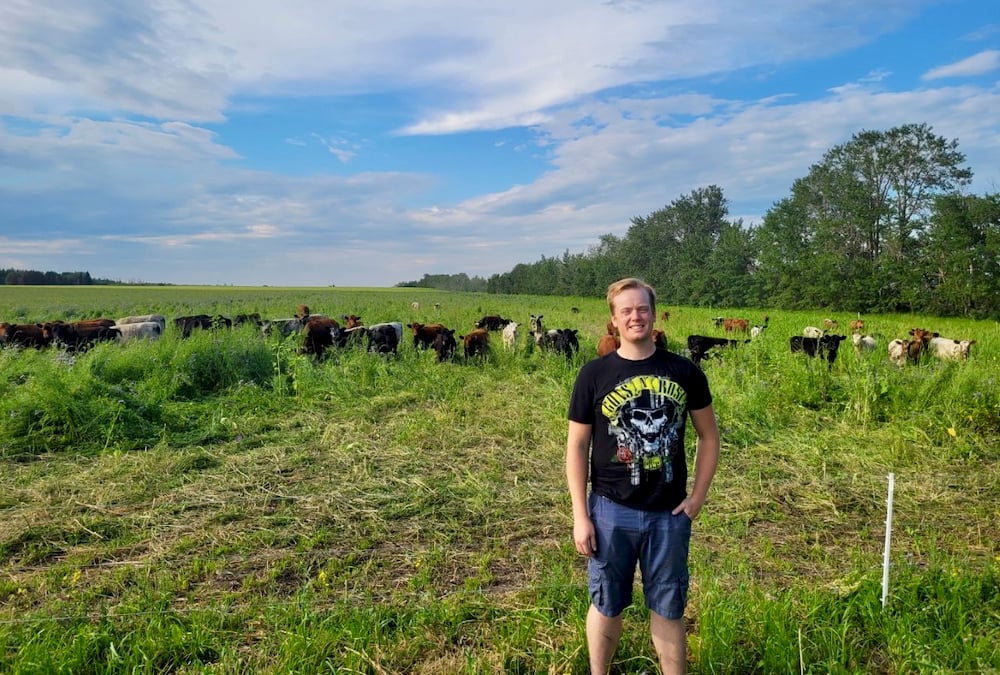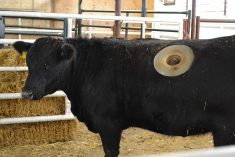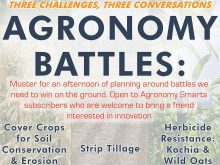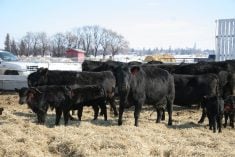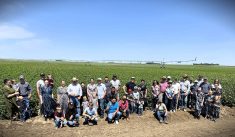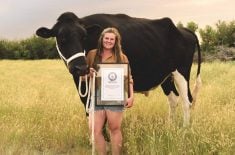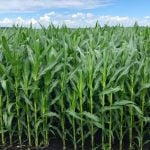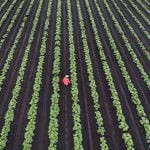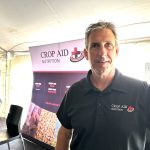These days farmers are encouraged to be experimental, and to conduct trials on their own land to see what works best for them.
What agronomists may not say is just how nerve-wracking it can be. And that goes double when doing something that has rarely, if ever, been done before.
In the case of Gibbons-area Groot Farms, that has meant incorporating livestock and cover crops into a potato operation.
Read Also
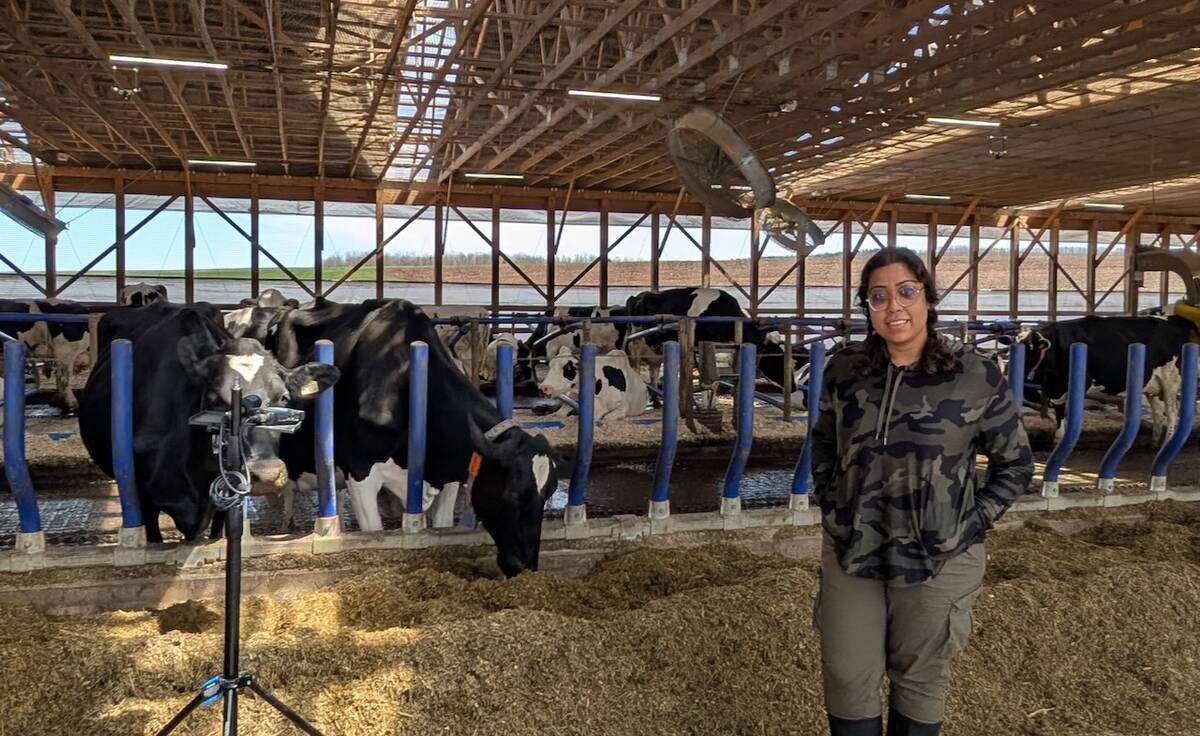
Moo translator and methane measures: There’s an app for that
Dalhousie University researchers use artificial intelligence to create new dairy farm apps that analyze cattle sounds and measure methane.
“Next year we’re already doing 160 acres (of cover crop), so that’ll be half of our potatoes that will be under a cover crop trial,” said Michael Groot, the fourth generation of a potato operation currently co-owned by his dad Don and uncle Wayne.
“If it goes poorly this year we’re already committed for next year, so that’s where the nervousness comes in.
“It’s not to the point where we have anxiety and we’re always thinking about it, but there’s always a little nervousness especially when you’re committing essentially a quarter of your crop to a trial.”
A lot of people these days advocate for a return to mixed farming. There’s not much argument that putting annual forages into a rotation and then running cattle can improve organic matter and soil health.
However, for those who just grow crops, the logistics — and unknowns — can be daunting.
But hearing about regenerative agriculture sparked the interest of the Groots. And their decision to include cattle and cover crops in their nearly 100-year-old potato operation also sprang from a simple desire to do something new.
“For 40 years we’ve been doing stuff all the same way,” said Groot. “And it seems like the quality of our land is decreasing — so we’re looking at some alternative measures to get some better results.
“We kind of established that maybe adding some animals to our rotation would help us a) increase our soil health and b) be good for our rotation. And hopefully (it will) reduce our input costs if we use the manure instead of (as much) fertilizer, which is so expensive right now.”

Rotation centred around spuds
The family runs a multifaceted potato operation. Along with their 320 acres of field potatoes (all under irrigation), they grow seed potatoes from plantlets in their greenhouse.
“We grow them for about five or six generations and then we sell them to places in the States and elsewhere,” he said.
They’ve traditionally employed a four-year rotation: Potatoes followed by wheat, canola and barley at two quarters per crop — although they rarely follow that formula to the letter.
“It changes year-to-year,” said Groot. “Sometimes we throw in peas or faba beans, we were farming canola for a couple of years and quinoa for a couple of years.
“The grain side gets all jumbled up and messed up. Sometimes we have 500 acres of something and sometimes it’s 100. It’s a mixed bag. The potatoes are pretty consistently (at) 320 acres.”
That won’t change with the move into cover crops.
“If we’re going to be removing anything from our rotation, it would be barley before potatoes. The long-term plan is to extend our rotation to five years instead of the four years it currently is and then just add in cover crops after barley or something like that.”
Some producers may be surprised that three farmers are able to make a living from about 2,000 acres (1,280 on the home site plus some rented land on which they don’t grow spuds). With most crops, you need 2,000 or more acres per family member to make a living. But thanks to the high value of potatoes, the Groots make it work.
“Potatoes are 10 times the work and the revenue as any other crop,” he said.
The cover crop/livestock experiment started small; trialling cover crops in small, five-acre plots.
After experiments with putting chickens on the plots via a mobile chicken coop, they decided to turn cattle out on the cover crop.

Send in the cows
Last year, the family took a big plunge into cattle, grazing them on half of a quarter section of cover crops where barley would have normally been grown. This year they’re expanding the grazing to a whole quarter section.
Their cover crop is a polyculture mix of ryegrass, various clovers, vetches, sunflowers, phacelia, turnips and forage kale.
“There’s all sorts of fun things in there,” said Groot. “They’re all there for a different reason. Some are in there for root development to break open the soil a bit more; skinny roots will also break open hardpan and allow bigger roots to access those channels they’ve created.
“The different legumes are for nitrogen fixation. And other plants are there to hopefully encourage the microbiology in the soil. We have beans and stuff like that too as well as sunflowering plants all season long for the bee population.”
Speaking of which, retaining beneficial insects is another goal of the Groots’ overall strategy.
“With conventional farming we spray and kill all the insects in the fields,” he said. “We’re hoping if we can have some beneficials nearby maybe we won’t have to do that quite as much.”
The family doesn’t own cattle and instead has an arrangement to run a neighbour’s cows on their land.
“That works nicely for us because we’re not cattle people — we don’t know how to best manage them for illnesses and all that kind of stuff. So it’s good to have someone who knows what they’re doing that’s invested.”
In return, the neighbour’s cows get a high-quality feed while Groot takes care of their day-to-day management such as watering and fencing. This doesn’t take a lot of time, he said.
“We’re probably on there maybe twice a week. It’s not too bad, maybe a couple of hours. At least last year. We’ll see how this year goes.”
The Groots haven’t seen any obvious yield boost from their new practices, but then again this has been a very small trial so far. They’ve only recently conducted soil tests so that’s up in the air as well.
“We’ll find out (our yield) next year,” he said. “We haven’t had a good enough test right now to really determine what the payoff is. That’s our big study I guess.”
There are also still a lot of unknowns that only further testing will reveal.
“We’ve got all kinds of trials coming out of this field: How much fertilizer should we have put down? What are the effects going to be on the potatoes?”
The questions are almost endless.
“We’re a little nervous too because we’re not sure if there’s going to be more or less disease pressure in those potatoes because it’s a completely different treatment process than we’ve ever done before,” said Groot. “We don’t know if we should be putting cows directly in front of potatoes or if we should be putting them after potatoes or in the middle somewhere.
“It’s all a big experiment. None of the information is solid. I’m thinking in three or four years we’ll have a much better idea of what’s going on.”


